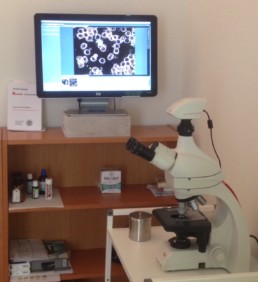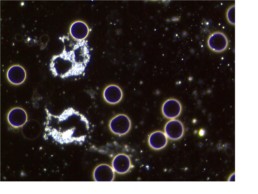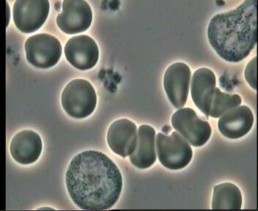Naturopathic analysis methods
The naturopathy is the way of bodiliy self-regulation. The connective tissue is the focus point of my naturopathic work. The major part of the human body consists of connective tissue, it connects all parts of the body.
Not only does it connect and support the organs, but also the muscles, the bones, and on the micro cellular level, it surrounds and fills each cell of the human body. A rapid diffusion of nutrients, metabolites and hormons between the blood and the tissue cells is guaranteed mainly by the connective tissue. It forms the true base of all kinds of metabolism between cells and their environment, the extracellular matrix, the fluid component of the connective tissue. It plays an important role within the new scientific branch of regenerative medicine.
The lymphatic system runs through the whole connective body tissue like a drainage system transporting the lymphatic fluid and removing waste products from the cell metabolism to the blood circulation.
If diseases of the connective tissue occur, the lymphatic flow congests, and waste products block the drainage system.
My work as naturopathic practitioner consistes of two parts. On the one hand in cleansing the connective tissue by stimulating the lymphatic flow, and on the other hand by improving the cell metabolism of the soft tissue.
Facial diagnosis is an experience-based technique and is a particularly well-developed aspect of the visual diagnosis in Greek Medicine, western naturopathy and other traditional healing systems . This is also called the art of physiognomy. Within naturopathy it is a valued method for achieving a quick over-view of the disease and for estimating its cause. The face is viewed as a mirror, where the internal condition of the inner organs is reflected through various signs “mapped” on the face.
This facial diagnosis helps to determine the cause of disease and whether the treatment has succeeded or not.
Reflexology analysis even dates back to the Native Americans. Reflex zones exist over the entire body e.g, on the ears, the back, the hands or the feet. They correspond to the organs in the body and project an image of the whole body onto the feet. Imbalances within the organs are noticibale at an early stage in the shape and nature of the soft tissue of the feet.
In my naturopathic work I mainly examine the reflex zones of the feet.
Tongue analysis or tongue diagnosis dates back several thousand years. This naturpathic diagnosis technique uses the tongue as a mirror of the inner organs (mainly the intestinal organs).
Thereby the color, the shape and the nature of the tongue are important diagnosis factors.
The live blood analysis (also known as dark field analysis or dark field microscopy) is a valuable method of evaluating living blood samples as it offers insight into the metabolic processes of the blood and the extracelluar matrix of tissue.
Dark field microscopy differs from bright field microscopy enormously because the sample is literally seen in a different light.
Conventional bright field microscopy evaluates the blood by quantifying the different types of blood cells, whereas dark field microscopy uses an other approach – not the quantity interests but the various on-going processes (e.g. the shape and nature of the different cells and their way of interacting with each other) in blood plasma over time. This approach depends highly of the the practitioner’s training and therefore not acknowledged by the conventional medicine.
Darkfield in contrast to brightfield microscopy
Dark field microscopy is able to enhance very delicate structures of a sample by contrasting unstained samples, which means it is recommended for transparent fluid samples such as vital capillary blood.
The dark field microscope is equipped with special optics and light condensers. The light from the source is redirected by mirrors and is reflected by the sample itself. Through the eyepiece of the microscope the sample is indirectly illuminated and contrast-rich image with a dark background. The process of lighting the specimen can be compared to the emerging of stars after dusk.
Darkfield microscopy (live blood analysis) is profoundly linked to the theory of pleomorphism by Dr. G. Enderlein (1872-1968).
In my naturopathic work I combine live blood analysis with tongue and face analysis in order to gain deeper insights into the various metabolic processes of tissue.
Important note:
This is a qualitative approach to blood analysis and therefore not acknowledged by conventional medicine. I do not use dark field microscopy to diagnose illness. Hence, my interpretation of dark field images is based on the scientific findings of medicine and extensive experiential research within the field of naturopathy.Under construction






